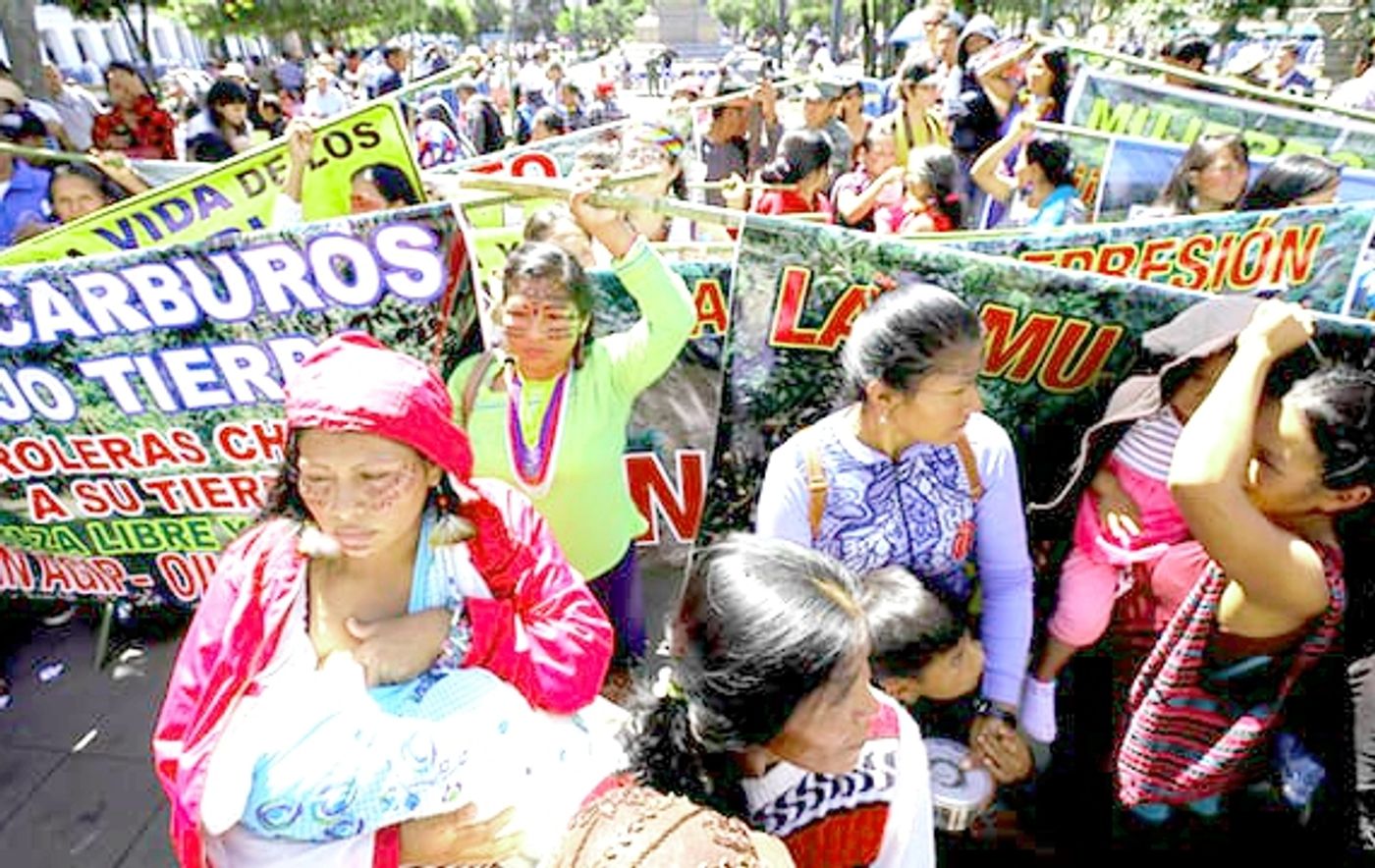Indigenous Women Activists Fight to Save Ecuador's Land
A movement of indigenous women brought their demands for an end to resource extraction to Ecuadorian President Lenin Moreno in late March. About 100 of them camped before the government palace in the capital city of Quito and were later granted a meeting with Moreno.
“Women don’t want more oil and mining exploitation. It is women who care for the children, who care for the land, so it should be women making these decisions,” Nina Gualinga, a 24-year-old environmental activist from Sarayaku, told The Guardian.
This female group is following up on a related 2017 action, in which more than 3,000 indigenous people from across the country held a two-week, 200-mile march from the Amazon to the palace. The marchers demanded an end to unregulated mining and oil drilling within their territories. While Moreno conceded to some of their demands in December, new drilling options have since been created. The women who came to the capital in March also seek government action on the violence and threats directed at them as activists.
Indigenous Activists Demand to Be Heard
Following the massive 2017 march and protest, Moreno made an agreement with the Confederation of Indigenous Nationalities of Ecuador (CONAIE), the biggest indigenous organization in Ecuador, to halt new mining projects and only proceed with those achieving compliance with constitutional regulations. This was to include meeting the requirements of article 57, which gives indigenous groups rights to consultation regarding extraction projects.
But in February, despite Moreno’s previous agreement with CONAIE, the government announced it was auctioning off 16 oil concessions, or contracts, in the country's southern rainforests. The local indigenous nations were not properly consulted beforehand, according to the nonprofit Amazon Watch.
Women Activists Meet With the President of Ecuador
In response to this broken promise, the women demonstrators gathered in the capital, many with traditional garb and face-painting. They 
“The threats against women are a consequence of extractivism,” Gualinga said.
“We will return to our communities and wait for a response from the government. If we do not receive a response in two weeks, we will be back,” Zoila Castillo, vice president of regional indigenous organization CONFENIAE, said. Moreno expressed a desire to find a consensus but also said, “it’s almost impossible for a world to exist without oil and mining.”
It is not unusual for land defenders and environmental activists around the globe to experience sexual violence and other forms of assault, along with death threats and murder. In 2017, almost four people were killed each week while defending their land and local natural areas against extraction and development projects.
In February, Ecuadorian voters strongly supported reducing mining in protected areas and limiting oil drilling in a national park. They also voted to limit the number of permitted presidential terms. Moreno introduced this issue and it was widely interpreted as a means of keeping his predecessor, Rafael Correa, from ever returning to power. Investigations into allegations of corrupt international oil dealings during Correa’s presidency are currently underway.










